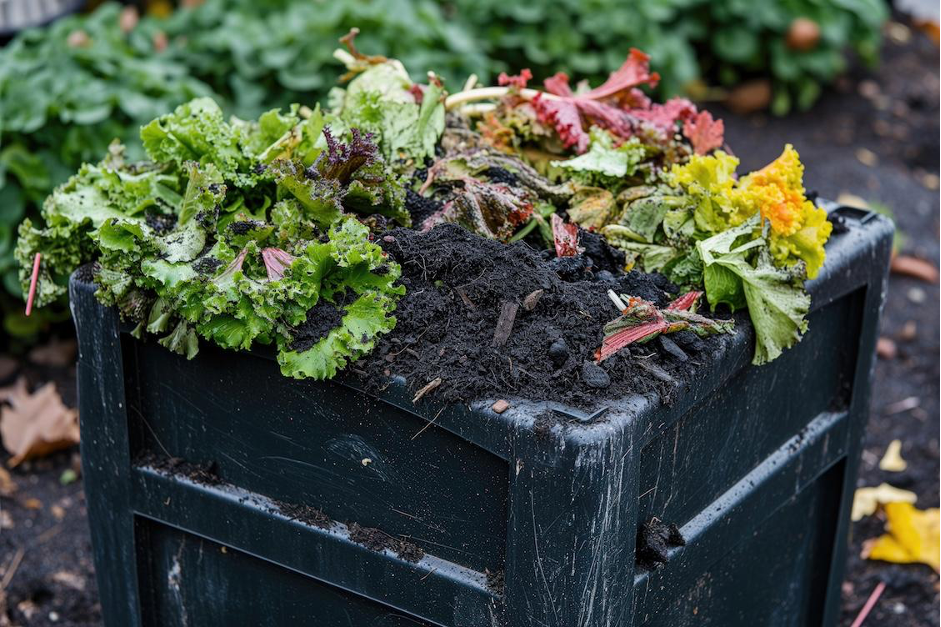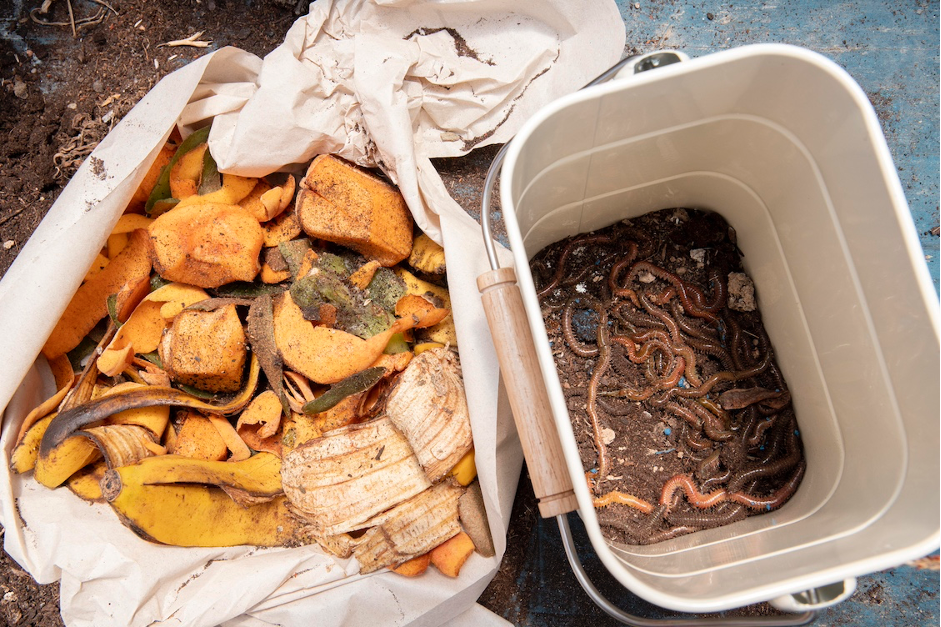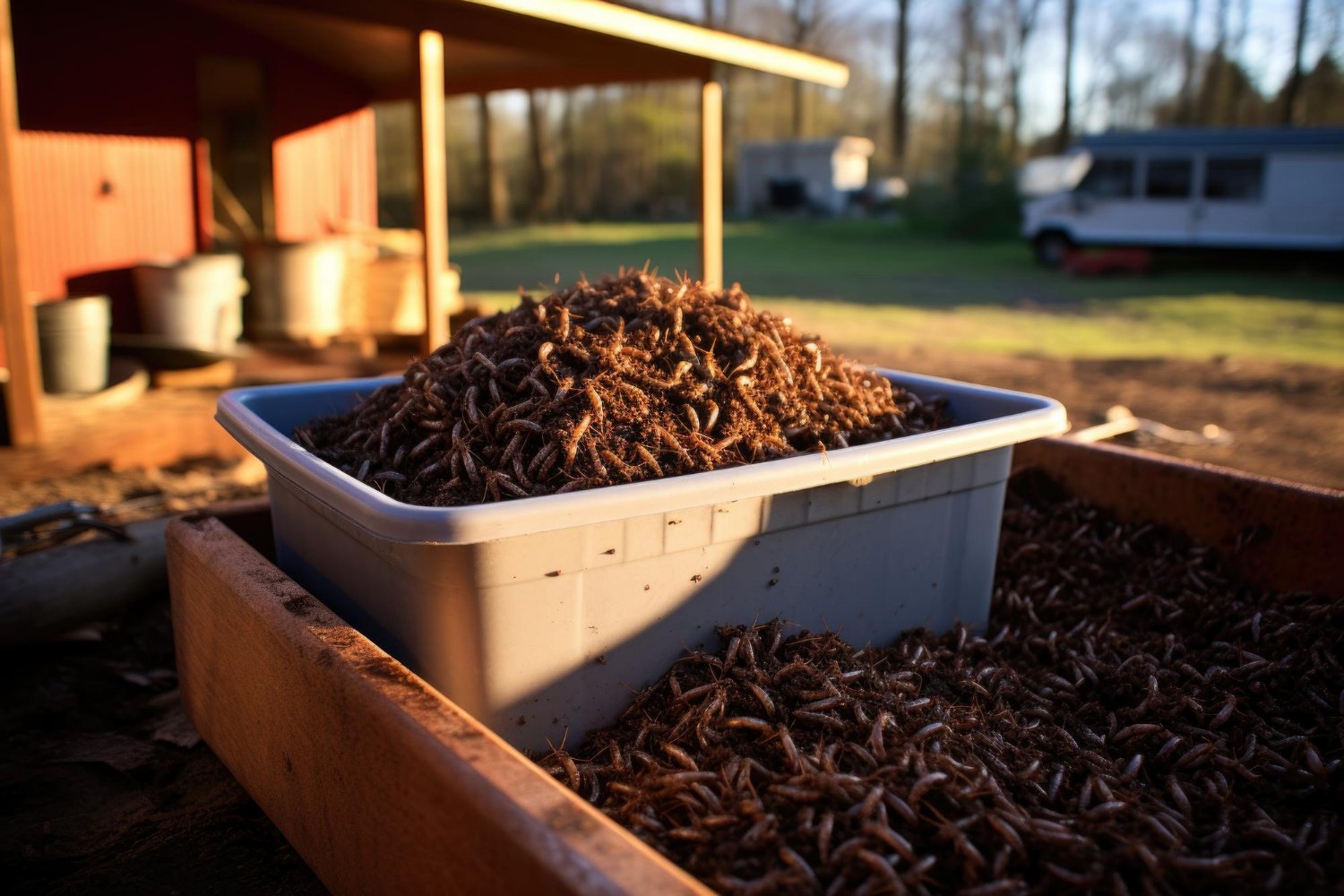 What is the best bedding for your composting worms? At Uncle Jim’s Worm Farm, we want you to enjoy your vermicomposting experience. For that reason, we recommend Red Worms. They’re the best worms for composting. That’s because these worms love devouring kitchen scraps. In return, they produce humus, the prized organic fertilizer perfect for gardens.
What is the best bedding for your composting worms? At Uncle Jim’s Worm Farm, we want you to enjoy your vermicomposting experience. For that reason, we recommend Red Worms. They’re the best worms for composting. That’s because these worms love devouring kitchen scraps. In return, they produce humus, the prized organic fertilizer perfect for gardens.
To start your composting bin, you need to make bedding. Bedding is your worms’ world. It needs to simulate their natural environment. How do you do that? We prepared several simple guidelines. Follow these guidelines and your worms will be very happy.
Your worm bedding must be:
- Non-toxic
- Sufficiently moist
- Neutral with a pH balance of 7
- Breathable with sufficient air flow and air holes
- Easily eaten
- Soft and gentle
Luckily, there are numerous bedding choices for your worm bin. Many are pre-made and can be purchased from Uncle Jim’s Worm Farm or at your local garden center. Others can be made from items in your household. You may need a paper shredder to make some of these beddings.
You can mix several types of bedding together. These are our top household beddings for your vermicomposting bin:
Coconut Coir. Made from coconut husk in blocks. Coconut coir is sold in 1.4 lb blocks at Uncle Jim’s Worm Farm and your local gardening store. A block may also come with a worm bin that you order online. Coconut coir is a renewable soil that expands when you add water. It’s great for the bin’s air space and drainage.
Brown Corrugated Cardboard. Sometimes we have boxes at home that can be used. They are also free for the asking at most stores. Shredded or torn into pieces, brown corrugated cardboard is terrific bedding that your worms will adore.
Shredded Paper products. Unbleached paper and newspapers printed only in black ink are acceptable. Avoid colored ink newspapers, bleached white office paper, computer printer paper, junk mail and envelopes with plastic windows as these will harm your worms.
Pre-existing Aged Compost. Many experienced composters use their on-going supply of existing aged compost as bedding.
Peat Moss. A popular item at garden centers. Check the package carefully to make sure that peat moss is the only ingredient. Do not use if the packaging has chemicals or any additional ingredients in the peat moss.
Fall Leaves. It’s best to compost fall leaves first before using them as bedding. Make a pile of your fall leaves and leave them outside for the winter. By the spring, they will be ready to use.
Untreated Wood Chips. Use only a small amount. It’s more like a garnish for your worms.
Straw and Hay. Depending upon your location, you may find these items at local farms and at garden centers. Small amounts of straw and hay are good as additional materials to the bedding.
Aged Manure from Bovine or Equine. Never use fresh manure. We recommend that you leave this natural fertilizer outside in the elements for several months to a year before using. Also, ensure that the animals were not recently wormed. The wormicide can also kill composting worms.
Lastly, we suggest you use a mixture of these beddings. Apply your creativity to create an everlasting beautiful world for your worms. Remember, a variety of beddings best simulates nature. A mixture of bedding also keeps your worms happy and comfortable. For example, add a small amount of untreated wood chips to an already existing composting bed. Or, put together coconut coir with shredded newspaper and peat moss. Perhaps make a combination of composted fall leaves with shredded corrugated cardboard.
You need to moisten the bedding. Ideally, let the water sit overnight to release any chlorine. Add a small amount of water, then stir. The bedding should have the feeling of a wrung-out sponge. Squeeze a handful. If water runs through your fingers, it is too moist, so add more bedding. Keep adding water, a little at time, and stirring until the bedding is the right consistency.
A happy and healthy worm makes a great composting worm.
Uncle Jim’s Worm Farm is #1 in the USA for composting worms and supplies. For vermicomposting, we recommend our Red Composting Worm Mix. For composting, fishing, and releasing into the garden, we have our Super Reds (European Night Crawlers). We offer mealworms for fishing and pet food as well as for science experiments.
All our worms are born and bred in the USA at our farm in rural Pennsylvania. Read our story.









4 thoughts on “Best Bedding for Your Composting Worms”
I have a huge 80 gallon spinning compost. It worked great I got a bunch of worms from you guys last spring. The soil is beautiful and ready to use, but how do I save the crawlers when I shovel out the soil? Do I have to go through it by hand? Is there a trick perhaps?
personally i just started this today so i cant say im an expert…but heck yes save them worms unless you like buying new ones all the time…and answer to second question is yah you sure do have to pick through it to get the worms after you dunp it out ….one a side note on that you might want to think about any eggs they may have laid and on that i have no idea how to make it so you can keep the eggs eggs seem like alot more trouble than just saving the worms
oh i forgot to mention there is 1 methoud of raking all the soil to one side and starting a fresh bed where the worms will travel to if you only place food there so onand than you can dig soil w/o having to pick through the soil
I have utilized 2 four tiered Uncle Jim’s Worm farms set up in my basement for many years. To harvest the castings, I take the bottom tray of mostly castings and place it on the top of the set up. I leave the basement light on and a couple of days later, most of the worms have migrated down where the food is and away from the light. I scoop the now drier poop onto newspaper, rake out the few worms left and throw them back into their trays, and go fertilize my garden. (I don’t use the castings for houseplants until everything is extremely dried out so as to not discover newly hatched worms in the houseplants!)